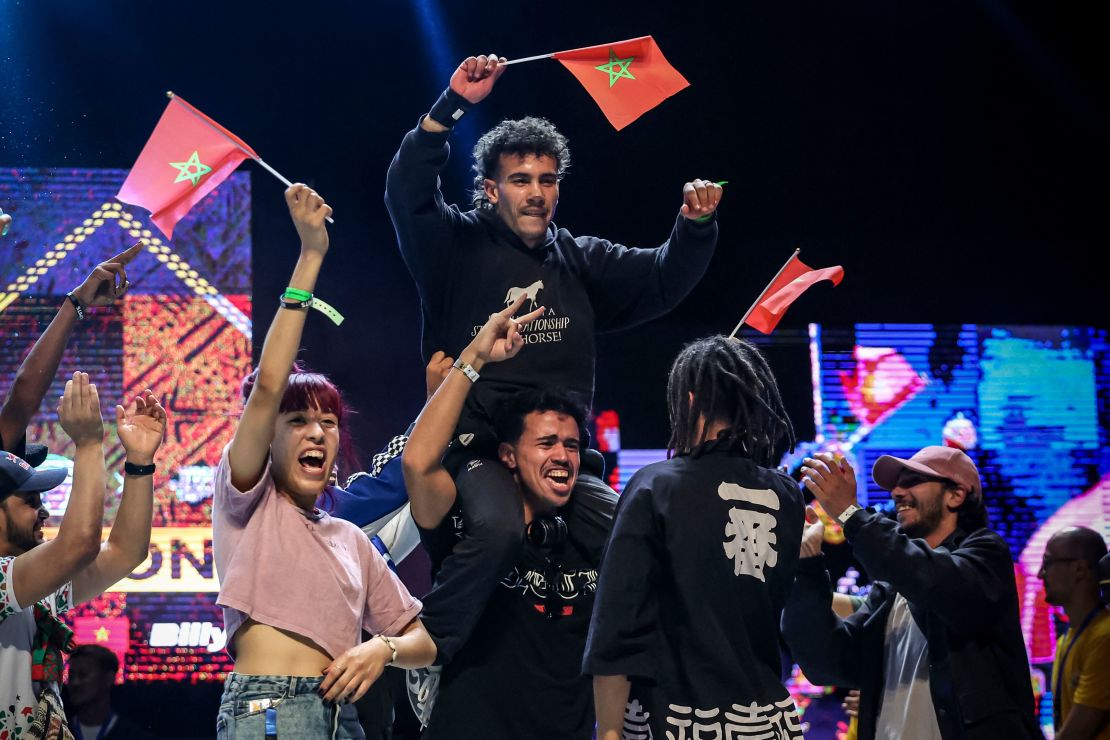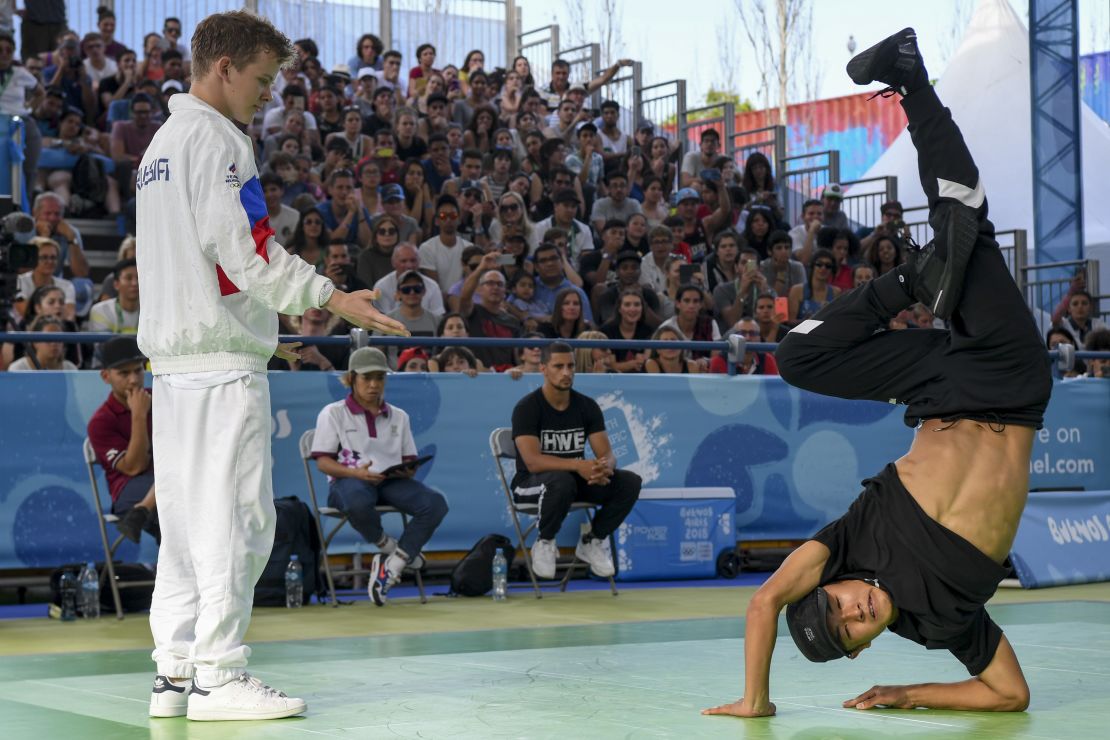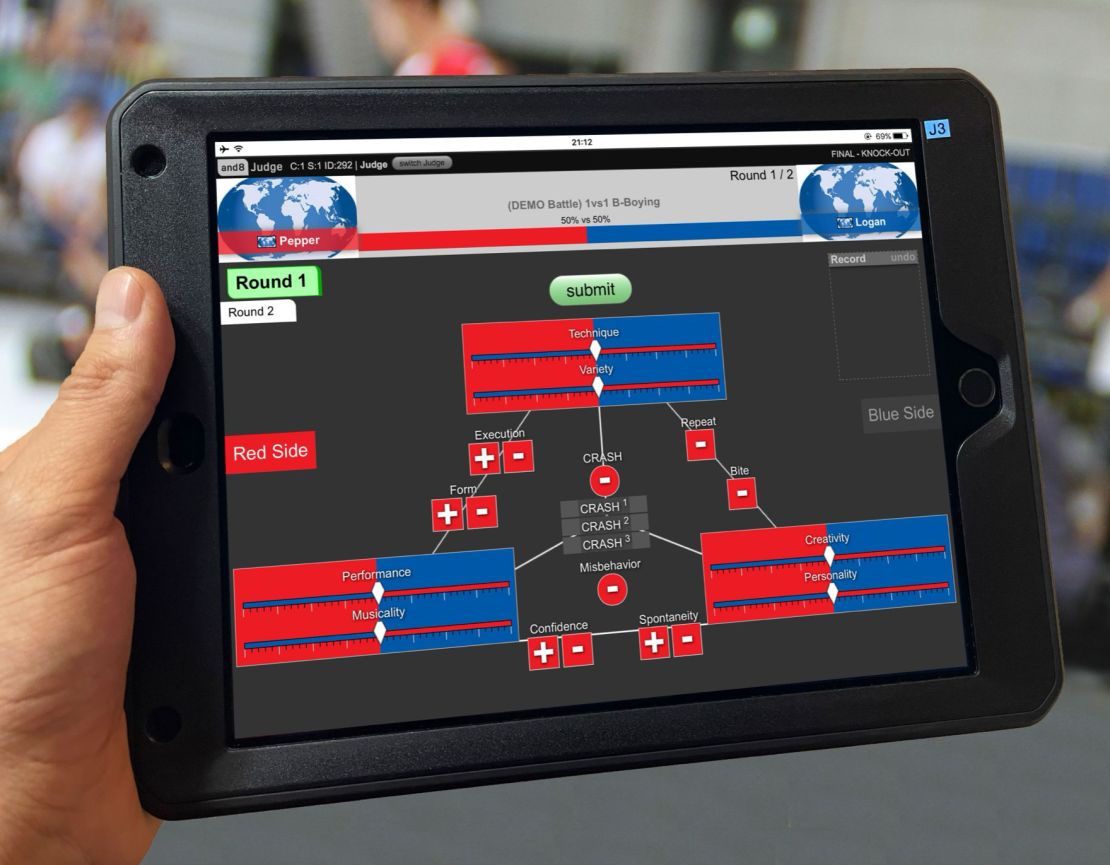For Moroccan b-boy Bilal Mallakh and b-girl Fatima El-Mamouny, the Paris Games will always hold a special significance. They’re the first Olympics to feature the sport of breaking, and the Moroccan pair are the only Africans competing in the discipline.
“Representing Morocco is a beautiful thing,” Mallakh, who dances as “B-Boy Billy,” told CNN in an interview ahead of the Games. “The Olympics are certainly an important step (that) will definitely bring me more self-confidence and more opportunities.”
Mallakh and El-Mamouny earned their ticket to Paris by winning their respective finals at the inaugural World DanceSport Federation’s (WDSF) African Championship in Rabat, in May 2023.
El-Mamouny, aged 23, has previously represented Morocco in international competitions but Mallakh, who was still a teen at the time, was discovered at a competition just a month before the African Olympic qualifier by coach Rachid “Roshdi” Boutini, from the Royal Moroccan Federation of Aerobics Sports, Hip-Hop, Fitness and Assimilated Disciplines.
“I think what makes him special is his soul,” Boutini said. “He has the spirit of sacrifice, the spirit of learning and spirit of trust. This is what makes a champion become a champion.”

Mallakh, now 20, says that as part of Morocco’s national team he still has a lot of skills to master. “You have to manage your stress, listen to the introduction on stage, occupy the whole stage, choose the right combinations. It goes beyond dancing for the sake of dancing,” he said.
Breaking into the Olympics
Breaking, or breakdancing, as it is most commonly known, originated on the streets of New York’s South Bronx in the early 1970s. Dancers would show off their moves during percussion “breaks” in songs played at clubs and block parties, giving the discipline its name.
Mallakh says he was surprised to find out some in the breaking community disagreed with it being an Olympic sport. “Without breakdancing in the Olympic Games, it would have never been regulated in Morocco and we will not give it the attention it deserves,” he added.
According to German b-boy legend Professor Niels “Storm” Robitzky and British DJ Kevin “Renegade” Gopie, the global breaking community has needed new blood and a bigger stage for years.
The International Olympic Committee, which had been testing new sports as part of its strategy to bring in younger audiences, incorporated breaking for the first time at the 2018 Youth Olympic Games (YOG) in Buenos Aires, Argentina.

“Breaking was having a crisis before the YOG and Summer Games announcements, (with) not many new generations in various nations,” DJ Renegade said. “It’s a symbiosis – the Olympics and the community will both gain from this relationship.”
Storm and Renegade developed The Trivium judging system for the Youth Olympics, a threefold approach to each performance, based on the “physical (body), interpretative (soul), and artistic (mind)” abilities. In 2023 the World DanceSport Federation introduced changes to the Trivium system, to be used in Paris.
“The WDSF changed the judging system and now use criteria. In the (original) Trivium, judges react to what they see and therefore act to the evidence presented. They don‘t prescribe but describe,” Storm said.

International Olympic-certified breaking judge Emmanouil “Emmanuel Fox” Chalkiadakis told CNN via email that for the first time in breaking, the judges for the Olympic qualifiers were trained to base judging on breaking principles, with creativity being the one of the most important aspects.
“(Breaking) is not only a dance; it also borrows from acrobatics, clowning, capoeira, gymnastics, and kung-fu movies. If you’ve followed breaking for years you will observe that creativity has never stopped,” added Chalkiadakis. “With the implementation of the new system, there is full transparency and accountability on the judge’s side and actual feedback for the competitors.”
In Paris, the Moroccan duo, along with the 16 b-boys and 17 b-girls, will compete in one-on-one battles and will be judged on “technique, vocabulary, execution, originality and musicality.”
El-Mamouny says the biggest challenge so far is training with the rigor of an Olympic athlete while keeping the essence of breaking in each performance. “We’ll encounter several difficulties like any athlete on the eve of the Olympics but I’m not going to give up. It’s both stressful and exciting,” she added.

Moves to watch
B-boy “Billy” Mallakh got into breaking when his older brother introduced him to hip-hop culture at a very young age. “This is art that allows me to express myself and encourages creativity,” he explained.
That creativity is expressed through a variety of established moves that he practices in his “cypher,” when he and his breaking friends meet. In a battle, however, Top Rock is how dancers introduce themselves to their opponent, matching the groove of the music they’re performing to, and setting the tone of the competition.
The Freeze is a breaker’s “exclamation point” and is usually performed upside down.
Footwork and Power moves require the most balance and acrobatic skill of all the moves in breaking, according to Mallakh, and are performed on the floor and using hands and feet at the same time.
Mallakh says the moves require more than athleticism — a dancer’s style, taste, and heritage all help them to stand out on stage. “Breakdancing is 50% physical effort, 50% artistic ability,” he added. “If you focus only on the physical you will not have enough to win.”
Coach Boutini is helping Mallakh fine tune his competitiveness but trusts his abilities to perform at the Olympics. “We want to make his style more powerful and build up his character more because competition and international battles are a new thing for him,” said Boutini.
“The secret is hard work,” Mallakh added. “Breakdancing helps combat self-doubt. You get to go on a big stage and dance in front of a large audience, this is the beauty of breaking.”
After debuting in Paris, breaking will not feature at the 2028 Olympics Games in Los Angeles, despite being hosted in the country where breaking has its cultural roots.
However, for some in the community, the work of getting recognition for breaking goes beyond just the Olympic Games.
“We made it to the Olympics in Paris,” said Storm. “My hope is, and has been for the last 40 years, to establish breaking as an accepted cultural art form. Regardless of whether it will be accepted in Brisbane (for the 2032 Olympics) or anywhere else, I will continue my path because I think it is absolutely worth it.”




